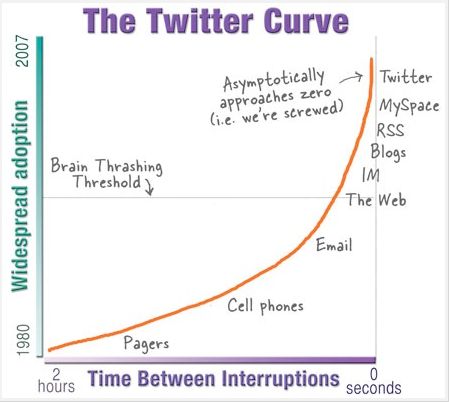
22nd October, 2014
In 1998 our attention spans were on average, roughly 12 minutes. By 2008 that number had decreased to a miserly five minutes and today, they are likely to be even lower. Not quite coincidentally, during that time (+/- 2 years) global internet usage has dramatically increased. With it, our exposure to rapidly developing and devolving online ecosystems, consistent connectivity to online knowledge resources and the numerous manifestations of social media have shaped our internal concentration levels, as well as our wants and desires.
This has led to a core change for many market researchers. Moving into the hyper-connected 21st Century whilst still clinging onto clipboards has left researchers behind, disillusioned, or both. But not everyone wants to keep a grip on the past.
No, in our 140-character Twitter fuelled global network market research can be rapidly collated and disseminated between staff, client and consumer, forcing a shift in how we offer data for presentation. With so much potential data on offer and the rapidly changing online network capturing a snapshot of insight can rely not only how quickly you can gather your data, but also the speed you turn it around.
Embracing technology has become vital for the modern day market researcher. That is not to say traditional methods are finished, but there is such an emphasis in all market sectors to provide actionable mobile services that the market research industry as a whole could not wait any longer for progression. In a contemporary society where we are bombarded with information concerning nearly every article of our lives, extracting data back from the individual can be surprisingly difficult. So, the onus has to be on market researchers to update their methodologies to maintain modern-day relevance.
The market research industry has, in all fairness, begun to innovate. Realising that consumers will no longer wait around, or stop for in-the-wild questionnaires has escalated the requirements of mobile market research and its associated vectors: app development, rich data capture, location-aware surveying and much, much more. It is a potentially win-win situation for the market research industry. Suddenly, the most vital aspect of the job, capturing consumer insight, can be completed rapidly, on the move, using digital and mobile tools to focus on specific demographics, locations or businesses, driving a richer, data economy for market researchers.
Conversely, this model facilitates short-term insight in a global network that is rapidly evolving. Insight that was golden last month might be somewhat different a month down the line. Of course, not all consumer insight morphs so rapidly. There are also customer communities, online panels and focus groups, as well as the traditional phonecall (sometimes the traditional just works best!) for market researchers to employ to gather their data. However you look at it though, the industry has moved forwards with great leaps throughout the last decade and it will continue do so, as the many individual market researchers and agencies realise their role in the contemporary market research industry.
So whilst our attention spans may have dramatically decreased, it hasn’t stopped the market research industry evolving to continue attracting our attentions and ultimately, our insight.
Image Credit: newsfuture